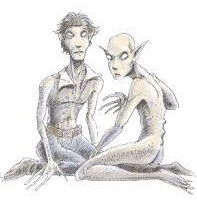 The first edition of AD&D includes a number of giant invertebrates, mostly insects. The idea behind these may be influenced by the "big bug" films of the post-WWII era, starting with Them! in 1954, and they provide the possibility of exotic-looking monsters that nonetheless have to look no further than the natural world for inspiration.
The first edition of AD&D includes a number of giant invertebrates, mostly insects. The idea behind these may be influenced by the "big bug" films of the post-WWII era, starting with Them! in 1954, and they provide the possibility of exotic-looking monsters that nonetheless have to look no further than the natural world for inspiration. Once we leave insects and look at spiders, there is an even more obvious inspiration: Shelob in Lord of the Rings. While she, and her relatives in other Tolkien works, were likely the primary inspiration behind the original giant spiders of D&D, there are plenty of other fictional examples. The cinematic classic The Giant Spider Invasion is one such (yes, I've actually seen it; there's 80+ minutes of my life I'm not getting back...) and, from more modern fiction, there's Aragog in the Harry Potter books. Giant spiders aren't found in European myth, but there are the Tsuchi-gumo of Japan, which are usually described as spiders (but sometimes crickets) and, at a stretch, Anansi the spider-god of West Africa.





